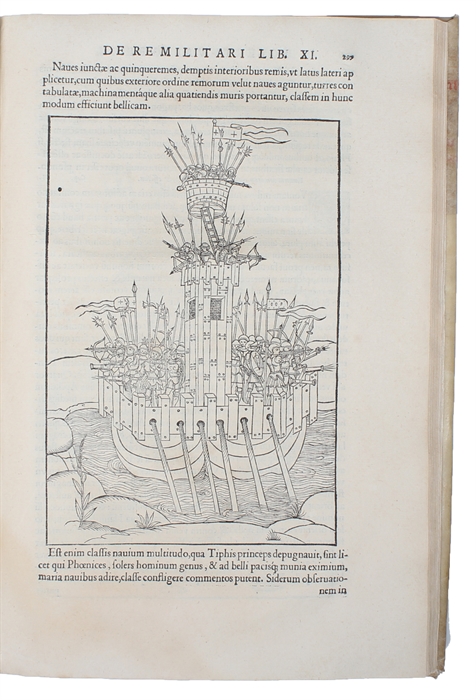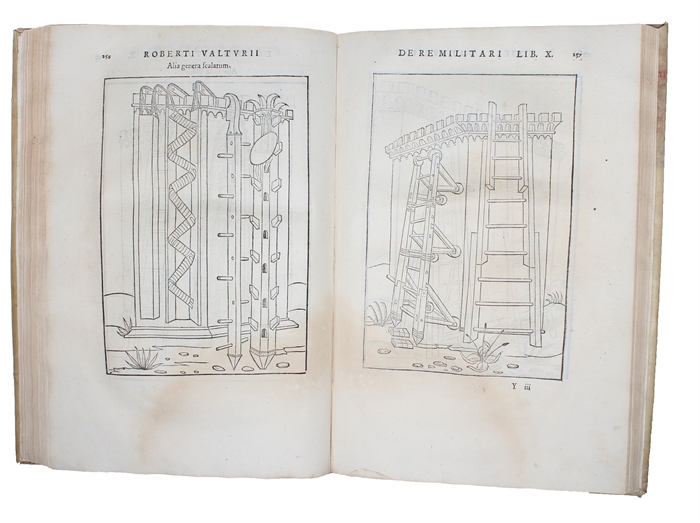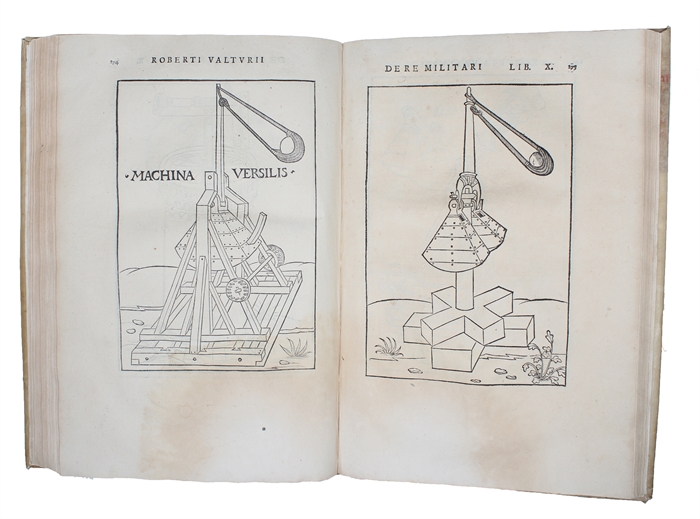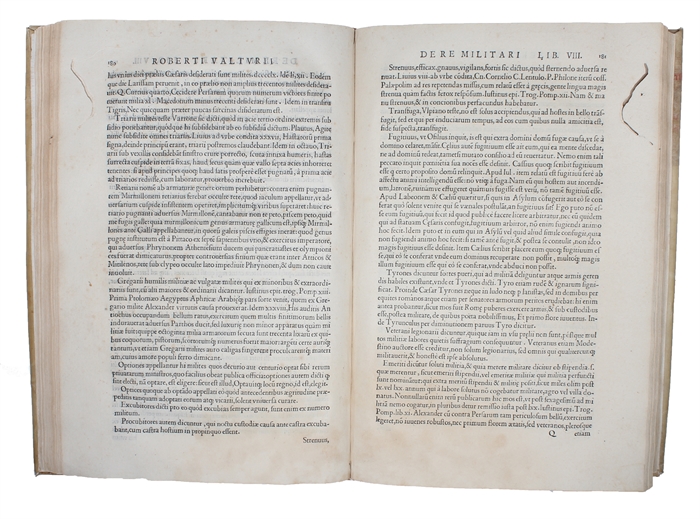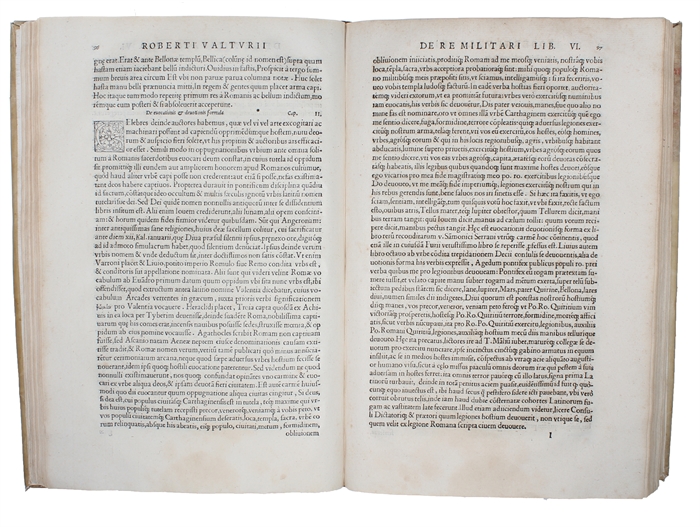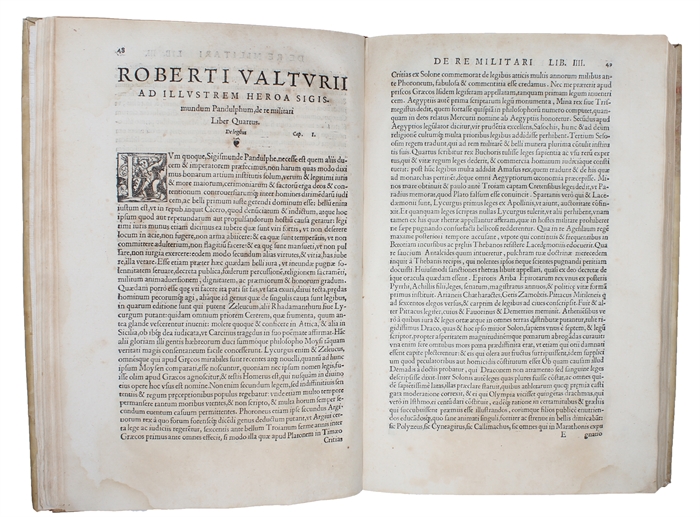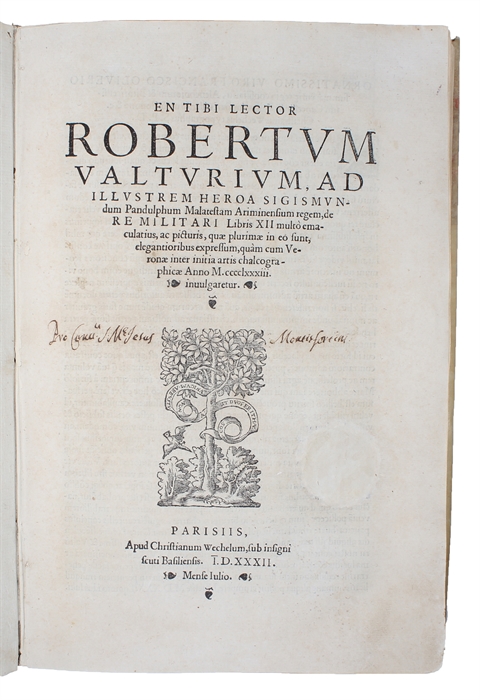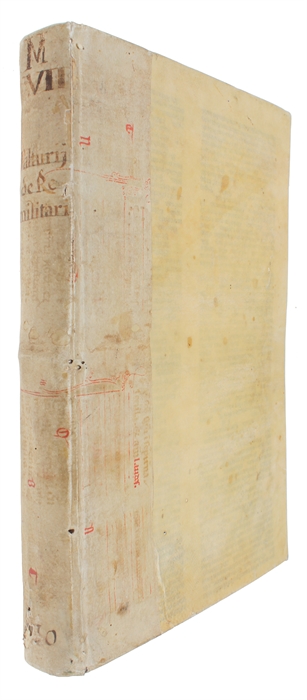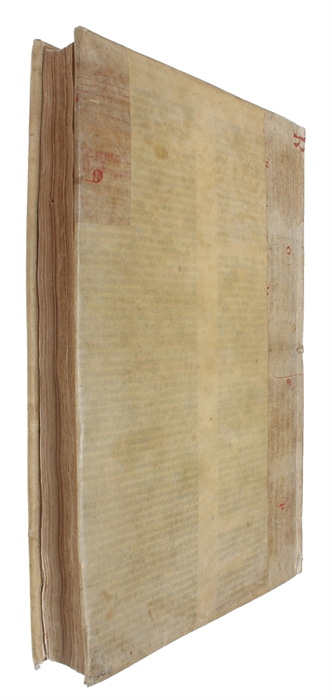VALTURIO’S FAMOUS ILLUSTRATED MILITARY TREATISE
VALTURIUS, ROBERTUS. [ROBERTO VALTURIO].
De Re Militari libris XII, multo emaculatius, ac picturis, quae plurimae in eo sunt, elegantioribus expressum.
Parisiis, apud Christinum Wechelum, MD.XXXII [1532].
Folio (331x204 mm). Bound in contemporary half vellum with title in contemporary hand to spine. Spine made of vellum leaf from Antiphonary Lower part of spine with wormhole. Title-page with circular repair (measuring 32x32 mm), not affecting text. Previous owner's ?name to title-page and two leaves with a few marginal annotation in the same hand. The following pages with marginal wormtract, far from affecting text: pp. 111-208 and 229-252. Vague dampstain affecting lower part of inner margin of Pp. 185-285, otherwise internally fine. (12), 383, (1) pp.
The Rare first edition of Valturio's landmark work to be printed printed in France. The work constitutes the very first book "printed with illustrations of a technical or scientific character" (PMM). The magnificent woodcuts are 'reversed free copies' (Mortimer) of the blocks used to illustrate the second edition (Verona, 1483) which were in turn copied from the first edition (Verona: Johannes, 1472). Cockle notes that these illustrations were 'said to be from da Vinci's drawings'. (Cockle p. 134). The De Re Militari is essentially a compendium of the latest techniques and devices for scaling walls, catapulting missiles, ramming fortifications, and torturing enemies and the work marks the transition between Medieval and Renaissance warfare with the application of cannons and gunpowder.
Soon after it's first appearance in 1472 The work became a primary handbook for Renaissance princes and military leaders: Leonardo da Vinci made use of it while acting as chief engineer to Cesare Borgia and even before its first printing the treatise was highly regarded and circulated in manuscript.
The work kept being reprinted several times and the dates suggests it continued to be of more than antiquarian value: The 1484 edition appeared shortly after the accension of the militant Charles VIII and the present edition came on the heels of Francis I's important reorganization of the French army.
"The historical importance of the De Re Militari lies in the fact that it is the first book printed with illustrations of a technical or scientific character depicting the progressive engineering ideas of the author's own time. The woodcuts illustrate the equipment necessary for the military and naval engineer; they include revolving gun turrets, platforms and ladders for sieges, paddle-wheels, a diver's suit, a lifebelt, something resembling a tank, pontoon and other bridges, a completely closed boat that could be half submerged, etc. [...]The Verona Valturius and its reprints were the handbooks of the military leaders of the Renaissance, and Leonardo da Vinci, when acting as chief engineer to Cesare Borgia, possessed a copy and borrowed some of its designs."-Printing & the Mind of Man 10-(1st ed. of 1472).
"The first printed edition of Valturio's work (1472) was a masterpiece of typography and woodcut. The woodcuts (or at least the drawings) were formerly attributed to Matteo de' Pasti; but they may have been done, as E. Rodakiewicz has proposed, by Fra Giovanni Giocondo Veronese. Military leaders of the period held the book in high esteem, and Leonardo da Vinci copied passages of the text and commented on them. Some of the manuscripts, such as those at Dresden and Munich, which contain very fine drawings, may have been produced after the first printed edition and in fact were based upon it." (DSB)
Adams V-224
Mortimer Harvard French 535
Cockle 501
Honeyman 3024.
Stillwell p. 289 (No. 897).
(For the the first edition see (1472:); PMM no. 10; Dibdin no. 172)
Order-nr.: 55505

